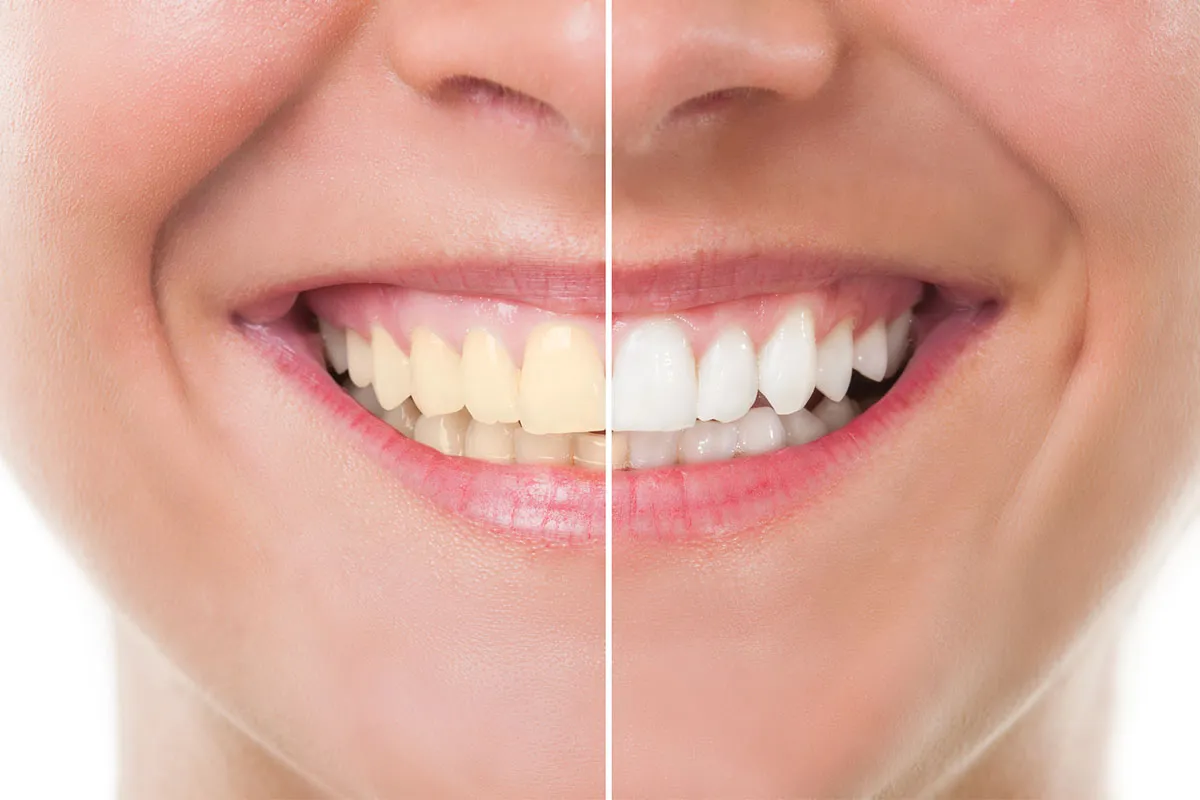Understanding Laser Teeth Whitening
Laser teeth whitening, often touted as a quick and effective method for brightening smiles, has become increasingly popular in recent years. But what exactly does it entail? At its core, laser teeth whitening, also known as power whitening or in-office whitening, involves a dentist applying a strong whitening agent, typically hydrogen peroxide, to the teeth. This is followed by the use of a laser or specialized light to accelerate the bleaching process. The procedure is designed to break down stains and discoloration, revealing a significantly whiter and brighter smile. This article aims to provide a comprehensive overview of laser teeth whitening, focusing on the crucial aspect the cost associated with it. We will delve into the science behind the procedure, the factors that influence the cost, and how to find the best value for your investment, empowering you to make informed decisions about your dental health.
The Science Behind Laser Teeth Whitening
Understanding the science behind laser teeth whitening is key to appreciating its effectiveness. The primary mechanism involves the use of a bleaching agent, usually a high-concentration hydrogen peroxide solution. This solution is applied to the surface of the teeth, where it penetrates the enamel to reach the dentin layer, which is the layer beneath the enamel. The hydrogen peroxide then reacts with the stain molecules within the dentin, breaking them down into smaller, less visible components. The laser or specialized light serves as a catalyst, accelerating this chemical reaction. The light energy activates the hydrogen peroxide, causing it to release oxygen molecules more rapidly. These oxygen molecules then oxidize the stain particles, effectively bleaching the teeth. It’s important to note that laser whitening primarily targets extrinsic stains (those on the surface) and intrinsic stains (those within the tooth structure). The intensity and duration of the laser exposure are carefully controlled by the dentist to ensure both effectiveness and safety, minimizing any potential damage to the tooth enamel or surrounding tissues. This process is a carefully controlled chemical reaction designed to lighten the color of your teeth.
How Laser Whitening Works
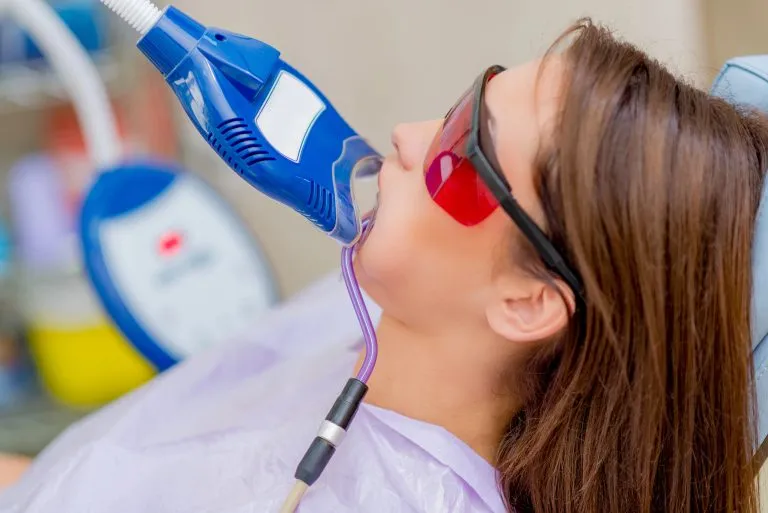
The process of laser teeth whitening typically begins with a thorough dental examination and cleaning to ensure the teeth are healthy and free from plaque or tartar. The dentist will assess the shade of your teeth and discuss your desired outcome. Next, a protective barrier is applied to the gums and soft tissues to prevent irritation from the whitening agent. Once the soft tissues are protected, the concentrated hydrogen peroxide solution is applied to the surface of the teeth. A special laser or light is then directed at the teeth to activate the whitening agent, accelerating the bleaching process. The light is typically focused on the teeth for a specific duration, often in intervals, and the procedure may be repeated multiple times during a single session. Following the laser treatment, the whitening agent is rinsed off, and the dentist may apply a fluoride treatment to help strengthen the enamel and reduce sensitivity. The entire procedure, from start to finish, usually takes about an hour or two. The immediate result is often a noticeably whiter smile, with the final shade becoming fully apparent a few days after the treatment.
Factors Influencing Laser Teeth Whitening Cost
The cost of laser teeth whitening is not a fixed price; several factors can influence the final amount you pay. Understanding these factors can help you manage your expectations and make informed choices. One of the primary determinants is the geographical location where you receive the treatment. Prices tend to be higher in major metropolitan areas due to higher overhead costs, such as rent and labor. The dentist’s experience and reputation also play a significant role. Highly experienced and reputable dentists may charge more for their services, reflecting their expertise and the quality of care they provide. The type of laser technology used can also affect the cost. Some advanced laser systems may come with a higher price tag. Pre-treatment procedures, such as a professional cleaning or addressing existing dental issues, will add to the overall cost. Additionally, post-treatment care, like the use of sensitivity-reducing products, might incur extra expenses. By considering these various components, you can gain a clearer perspective on why the cost of laser teeth whitening can vary so widely.
Geographical Location’s Impact
As mentioned, the geographical location significantly impacts the cost of laser teeth whitening. Dental practices in major cities and affluent areas often have higher operating costs, including rent, utilities, and staff salaries. These higher overhead expenses are frequently passed on to the consumers in the form of increased prices for treatments such as laser teeth whitening. In contrast, dental clinics in smaller towns or less populated regions may offer more competitive pricing due to lower operational costs. It’s worth researching the price differences between different locations to find the best value. Keep in mind that while price is important, the quality of care should always be your top priority. Look for a reputable dentist with good reviews, regardless of location, to ensure you receive a safe and effective teeth whitening treatment. Comparing prices from multiple clinics within your area is a good strategy before making a final decision.
Dentist’s Experience and Reputation
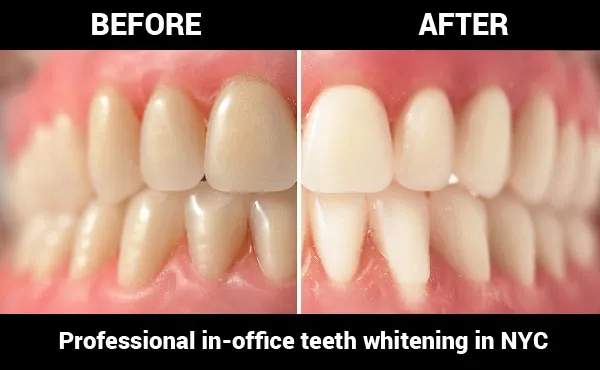
The dentist’s experience and reputation are critical factors influencing the cost of laser teeth whitening. Dentists with extensive experience in cosmetic dentistry and a proven track record of successful teeth whitening procedures often charge higher fees. Their expertise allows them to deliver superior results and minimize the risk of complications. Reputation matters as well. Dentists with positive reviews, testimonials, and a strong professional standing often command a premium for their services. Patients are typically willing to pay more for the assurance of receiving high-quality care from a trusted professional. Before committing to a procedure, research the dentist’s credentials, experience, and patient reviews. Many practices showcase before-and-after photos of their work, which can provide insight into their skill level. Consider the value you place on expertise and the potential benefits of a successful outcome when deciding how much to spend on laser teeth whitening.
The Type of Laser Technology Used
The type of laser technology used for teeth whitening can also impact the cost. Dental practices may invest in different types of laser systems, each with its own features and capabilities. Some advanced laser systems may offer enhanced precision, faster treatment times, or specialized functionalities, which can increase the overall cost of the procedure. The technology’s sophistication and the manufacturer’s brand influence the investment required by the dental practice. Moreover, ongoing maintenance, service agreements, and staff training associated with these systems contribute to the overhead costs. As a result, patients may encounter a variation in prices based on the technology the dentist employs. While newer, more sophisticated laser systems might offer advantages in terms of effectiveness and patient comfort, the cost will reflect those advanced features. Inquire about the specific type of laser used and research its features before committing to treatment to assess the value offered.
Pre-Treatment Procedures and Their Costs
Before undergoing laser teeth whitening, certain pre-treatment procedures might be necessary, and these can affect the overall cost. A comprehensive dental examination and professional cleaning are usually required to ensure the teeth are healthy and free from plaque or tartar. These procedures help to optimize the outcome of the whitening treatment. Patients with existing dental issues, such as cavities or gum disease, might need these problems addressed before whitening. The cost of these pre-treatment procedures, including fillings, root canals, or periodontal treatments, will add to the total cost of the laser whitening. The dentist will assess the patient’s oral health and create a personalized treatment plan, which will outline all necessary procedures and their associated costs. It is essential to discuss these potential additional costs with your dentist upfront to avoid any surprises. Being proactive about your oral health and addressing any underlying issues can help you achieve the best possible results from your teeth whitening procedure.
Post-Treatment Care and Expenses
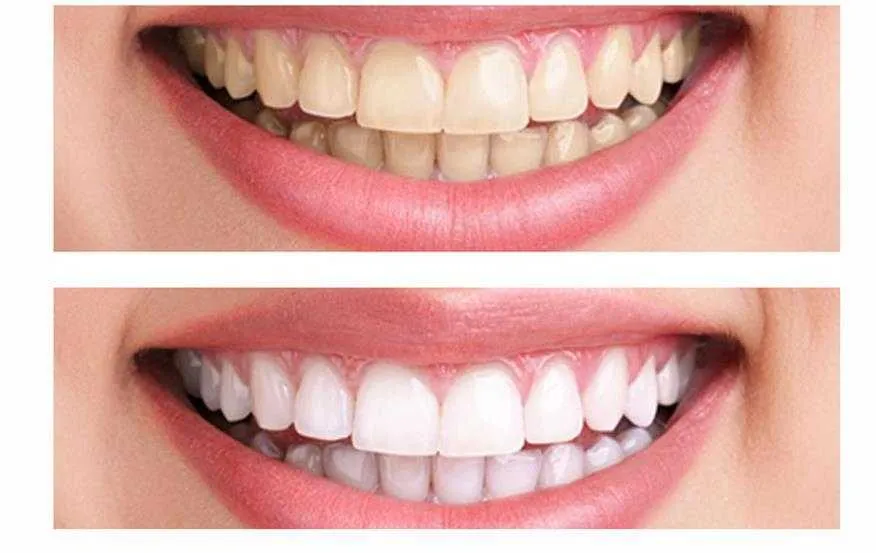
Post-treatment care is a crucial part of the teeth whitening process, and it can also contribute to the overall expense. After laser whitening, patients might experience some tooth sensitivity. The dentist may recommend or provide desensitizing toothpaste or fluoride treatments to help alleviate this. In some cases, custom-fitted trays for at-home touch-up treatments may be provided, along with whitening gels. These products and services can add to the final cost. Patients should also be mindful of lifestyle choices, like avoiding staining foods and drinks such as coffee, tea, and red wine, to maintain the whitening results. The dentist will provide detailed aftercare instructions, including advice on oral hygiene practices. Follow-up appointments might be scheduled to monitor the results and address any concerns. By being aware of these post-treatment expenses and following the dentist’s recommendations, patients can maximize the longevity and effectiveness of their laser teeth whitening treatment, ensuring a lasting bright smile.
Comparative Costs of Laser Teeth Whitening
Comparing the cost of laser teeth whitening to other teeth whitening methods can provide valuable perspective. Over-the-counter whitening products, such as whitening toothpaste, strips, and trays, are generally the most affordable option. However, they often offer less dramatic results compared to professional treatments. In-office whitening, including laser whitening, is typically more expensive but offers the most noticeable and long-lasting results. Another alternative is professional take-home whitening kits, which involve custom-fitted trays and a whitening gel prescribed by your dentist. These kits are generally less expensive than laser whitening but provide better results than over-the-counter options. When evaluating costs, consider the potential benefits of each method, including the level of whitening, the duration of the results, and the level of professional supervision. Laser whitening offers the advantage of immediate results under the supervision of a dental professional, making it a popular choice for those seeking a rapid and effective solution. Your individual needs, preferences, and budget will influence the best choice for you.
Laser Whitening vs. Other Whitening Methods
When considering teeth whitening options, it’s helpful to compare laser whitening with other methods. Over-the-counter whitening products, like strips and toothpastes, are readily available and cost-effective, but results can be gradual and less pronounced. These methods often contain lower concentrations of bleaching agents, and the effectiveness can vary. Professional take-home whitening kits, provided by your dentist, offer a more controlled approach. These kits use custom-fitted trays for better contact with the teeth and stronger whitening agents than over-the-counter options. The results are typically more noticeable, and the treatment is supervised by a dental professional. Laser whitening, on the other hand, provides immediate results under the supervision of a dentist. The procedure is quick, and the powerful bleaching agents, combined with the laser, accelerate the whitening process. The choice depends on individual needs, budget, and desired outcomes. If you seek fast, dramatic results, laser whitening might be preferred. If you prioritize cost-effectiveness and gradual results, over-the-counter or take-home kits could be suitable.
Cost-Benefit Analysis Laser vs. Alternatives
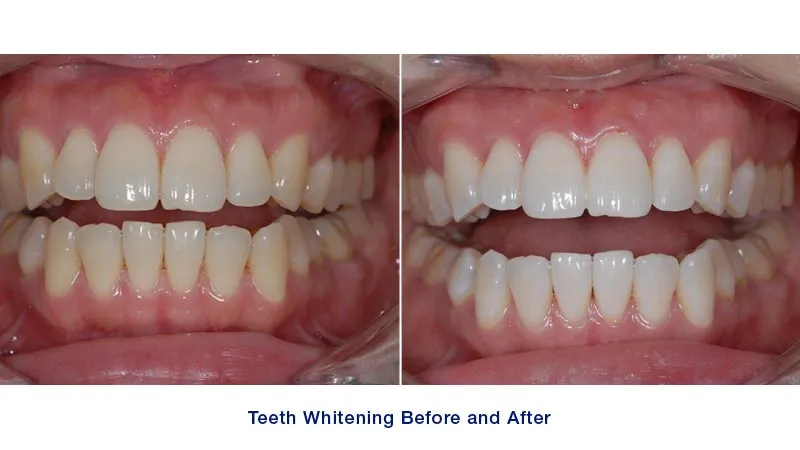
A cost-benefit analysis is a helpful tool when deciding between laser teeth whitening and alternative methods. Laser whitening typically involves a higher initial cost, but the benefits can be significant. The most noticeable benefit is the immediate and dramatic whitening effect, which can boost self-confidence and improve your smile’s appearance. Professional supervision ensures the treatment is safe and effective, minimizing potential risks. The long-term benefits include potentially fewer touch-up treatments compared to some other methods, thus saving money in the long run. Other methods, like over-the-counter products, may have a lower initial cost, but results can be inconsistent, and the need for multiple treatments increases the total cost. While professional take-home kits offer better results, the process is more gradual. When comparing, consider factors beyond cost. Evaluate the value you place on time, the desired level of whitening, and the importance of professional guidance. Ultimately, a comprehensive assessment of your needs and expectations will help you choose the method that offers the best balance of cost and benefits.
Finding Affordable Laser Teeth Whitening
Finding affordable laser teeth whitening requires a strategic approach. Begin by researching different dental practices in your area and comparing their prices. Don’t hesitate to call clinics and ask for quotes, ensuring you understand what is included in the price. Look for promotions and discounts that some dental practices offer, particularly during specific times of the year. Consider financing options. Many dental practices offer payment plans or work with third-party financing companies to make the treatment more accessible. Check for deals or packages that include multiple services, as this can sometimes result in cost savings. Be sure to read reviews and testimonials from other patients to ensure the clinic’s quality of service. While cost is a significant factor, never compromise on the quality of care. Consider the dentist’s experience, the technology used, and the overall reputation of the practice. A balance between affordability and quality is essential for achieving a bright, healthy smile without breaking the bank. This research will save you time and money.
Tips for Budgeting Your Treatment
Budgeting for laser teeth whitening involves careful planning. First, establish a realistic budget based on your financial situation and the prices in your area. Research different dental practices and obtain detailed quotes, including any potential additional costs for pre-treatment or post-treatment care. Explore financing options. Many dental practices offer payment plans, which allow you to spread the cost over time, making the treatment more manageable. Prioritize essential aspects of the treatment. While additional services might be tempting, focus on the core laser whitening procedure to keep costs under control. Consider the long-term value of the investment. A brighter smile can boost your confidence and potentially improve your social and professional life, making it a valuable investment in yourself. Set aside a contingency fund. Unexpected costs can arise, so having a financial buffer can provide peace of mind. Careful planning and financial discipline are essential for achieving your goal of a brighter smile without exceeding your budget.
Payment Options and Financing
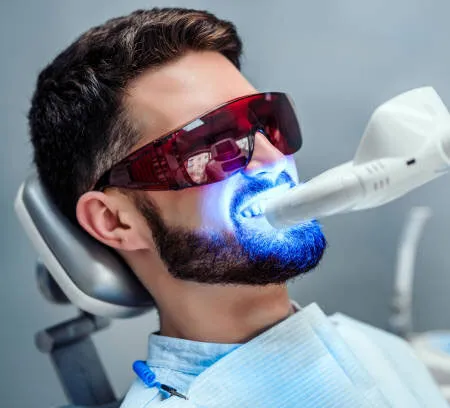
Various payment options and financing choices are available to help you manage the cost of laser teeth whitening. Many dental practices accept various payment methods, including cash, credit cards, and debit cards. This provides flexibility in how you settle the bill. Explore financing options. Many dental practices offer in-house payment plans, which allow you to spread the cost over several months. Third-party financing companies specialize in providing loans for medical and dental procedures. These companies often provide flexible payment terms. Consider the interest rates and fees associated with different financing options. Choose a plan that fits your budget and financial goals. Check if your dental insurance covers any portion of the cost. While dental insurance typically does not cover cosmetic procedures, it’s worth verifying your policy to see if any coverage is available. By exploring and comparing these payment options, you can choose the one that best fits your financial situation, making laser teeth whitening more accessible and affordable. This allows you to prioritize your dental health without straining your finances.
Maintaining Your Results
Maintaining the results of your laser teeth whitening requires diligence and care. First, follow your dentist’s aftercare instructions. This typically includes avoiding staining foods and drinks, such as coffee, tea, red wine, and dark-colored sauces, for at least a few days after the treatment. Brush and floss your teeth regularly, at least twice a day, using a whitening toothpaste to help maintain the brightness. Consider using a straw when drinking beverages that can stain your teeth. This minimizes direct contact with the teeth. Schedule regular dental checkups and cleanings. Professional cleanings remove surface stains and help maintain your teeth’s brightness. If you notice any staining, consider using touch-up treatments as recommended by your dentist. These treatments usually involve using custom-fitted trays and a whitening gel, which can restore your smile. By incorporating these practices into your daily routine, you can ensure your investment in laser teeth whitening yields long-lasting results. Regular maintenance will keep your smile radiant for years to come.
Oral Hygiene and Laser Whitening
Effective oral hygiene is vital both before and after laser teeth whitening. Before the procedure, good oral hygiene ensures your teeth are clean and free from plaque and tartar, allowing the whitening agent to penetrate the enamel effectively. Brush your teeth at least twice a day with a fluoride toothpaste. Floss daily to remove food particles and plaque from between your teeth. Regular dental checkups and professional cleanings are recommended before whitening to address any existing dental issues and ensure optimal results. After laser whitening, continue maintaining your oral hygiene routine. Brush your teeth gently to avoid irritating the gums, which may be sensitive after the treatment. Use a soft-bristled toothbrush. Continue flossing daily to prevent staining and maintain healthy gums. Consider using a whitening toothpaste to help maintain the brightness of your teeth. If sensitivity occurs after the treatment, use a toothpaste designed for sensitive teeth. Proper oral hygiene practices are essential for preserving your beautiful, brighter smile and maintaining optimal oral health.
Lifestyle Factors and Longevity
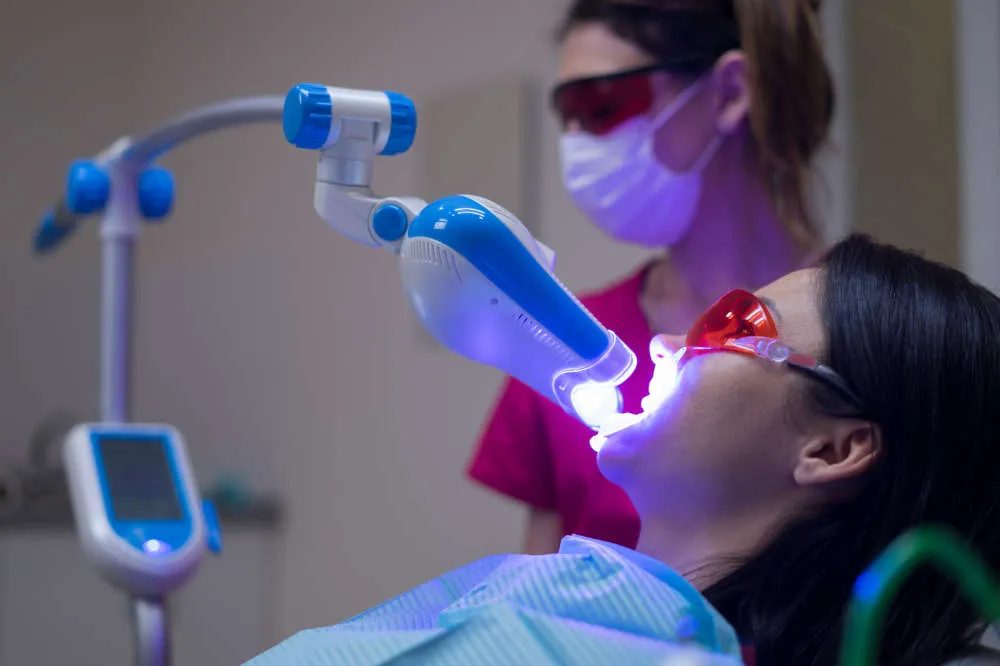
Lifestyle factors significantly influence the longevity of your laser teeth whitening results. Diet plays a crucial role. Avoid or limit the consumption of staining foods and drinks, such as coffee, tea, red wine, and dark-colored berries. Smoking is another major factor. Tobacco use not only stains the teeth but also accelerates discoloration, reducing the duration of your whitening results. Maintain good oral hygiene. Regular brushing, flossing, and dental checkups are essential for removing stains and maintaining your smile’s brightness. If you cannot completely avoid staining substances, consider using a straw when drinking beverages to minimize direct contact with your teeth. Regular touch-up treatments, as recommended by your dentist, can help maintain your results over time. By making informed choices about your lifestyle, you can extend the lifespan of your laser teeth whitening treatment and enjoy a brighter, more confident smile for years. Proper care will extend the life of your procedure.
